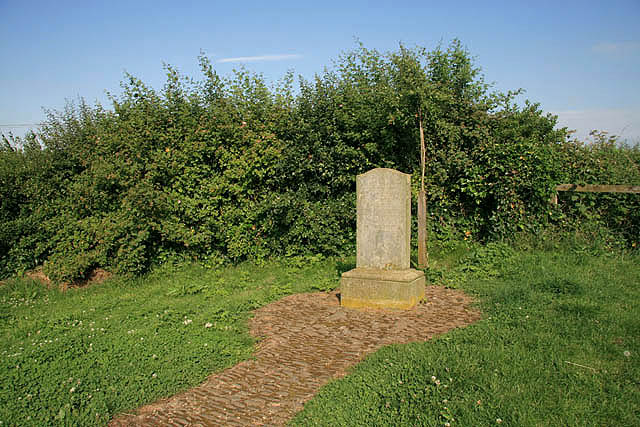Thomas the Rhymer
Sir Walter Scott included “Thomas the Rhymer” in the first edition of the Minstrelsy of the Scottish Border, where it appears in the second volume. In order, it would seem, to present as much of the material he had collected as possible, Scott published “Thomas the Rhymer” in three parts: the first of which was a composite of a copy transmitted to Alexander Fraser Tyler by Mrs Brown and another version “obtained from a lady, residing not far from Erceldoune” (MSB (1802) II 249), who was identified by Scott in a letter to Andrew Laing some twenty years later, as a Mrs Smith, who lived at Longnewton. The second part is a composite of prophecies attributed to Thomas the Rhymer and Scott’s own work, which he freely admits to – “as there are to be found in these compositions [the prophecies] some uncommonly wild and masculine expressions, the editor has been induced to throw a few passages together, into the sort of ballad to which this disquisition is prefixed” (MSB (1802) I 274), while the third is a “modern” expansion of this tale, which is only included within the traditional ballads due to the related subject matter.
To this end, we have only presented the first part, which Scott defines as “ancient”, and which was the first time that any version of the ballad had appeared in print.
History
There is a large amount of material surrounding Thomas the Rhymer, who is also known as Thomas of Erceldoun / Ercildoun, Thomas Rhymer and True Thomas. Some of it is historical, some of it, if ever it had historical grounding, has entered into the realm of myth and legend. Much of it is extraneous to the ballad, which was first referred to in 1800, and is the version collected from Mrs Brown.
That Thomas the Rhymer lived in the Thirteenth Century is generally accepted. There are tantalising snippets of evidence throughout historic and literary sources over the centuries. For example, there is a reference to him by his son in a charter which Scott reproduces in his prefatory notes to the ballad, and his name appears in Andrew of Wyntoun’s Orygynale Cronykil of Scotland , which was completed around 1426.
Off this fycht qwilum spak Thomas
Off Ersyldowne, that sayd in derne,
Thare suld mete stalwartly stark and sterne:
He sayd it in his prophecy;
Bot, how he wist, wes ferly
(Cronykil Book VIII, ch. xxxi ll 4720-24)
Thomas the Rhymer is also mentioned in Blind Harry’s The Actis and Deidis of the Illustere and Valeand Campioun Schir William Wallace, and is named as Thomas Rimour The epic poem was written some time in the mid 1400s, and Thomas the Rhymer must have been a well-enough known figure to have been included.
The Locations
There are a two locations mentioned in Scott’s version of the ballad. However, no little caution has to be exercised over some of the locations, as Scott owned land around the area and changed the names of places to better suit his preferences.
Huntlie Bank
Emily Lyle, in Fairies and Folk, provides an interesting insight into the location of “Huntlie Bank”:
Modern maps are again confusing to an attempt to locate “Huntlie banks”, “Huntlie bank”, or “the Huntlie bank”, as the place is named … for the name Huntlyburn House to the north-west of the Eildon Hills derives from Scott who re-named what had been called Toftfield when he bought the property (Lockhart 4: 82). He also called Dick’s Cleugh the Rhymer’s Glen (Grierson 4: 539; Parsons 95-98), and pointed out some place in this region as “Huntley Bank” (Irving 63, 95). However, in a letter to David Laing, Scott remarked, “There is another Huntly-Bank on the Eildon Hills nearer to the Eildon tree than mine. But I am determind mine is the right one. It is but fair to mention this though Huntlywood is the name of the farm seventy acres of which belong to me” (Grierson 7: 277). Scott owned “68 acres 3 roods & 30 poles or thereby” of “the lands of Bowden Muir and Huntly-wood”, and it appears that “his” Huntly-Bank was evolved form the name Huntlywood, which is found as early as 1606 in Inquisitionum Retornatorum Abbreviatio (III) where there is an entry for 24 April concerning Halydene cum manerie et Huntliewood infra baronium de Boldane [i.e. Bowden].
The Eildon Tree
The location of the Eildon tree is as problematic as that of Huntly Bank. No tree would have survived from the 1300s, and the sites which have been chosen as a commemorative location have varied over the years, with the current commemorative tablet and tree situated at the roadside of the old A6091, which is now accessible only by foot, but which used to be to the side of the main road. The stone has been moved at least once before. This site may have been chosen as it offers a view of a bridge over the River Tweed, which ties in with one of Thomas's prophecies. The tree growing beside the stone is, of course, a modern addition.
What can be said is that the memory of the ballad tale and its narrative are still commemorated in the general region of the Eildons.
It should be noted that “Erceldoun” is the modern-day Earlston, where the remains of a tower can be found. It is called Rhymer’s Tower.

